RARE German Lithophane regimental beer stein Rgt 88 CIRCA 1905
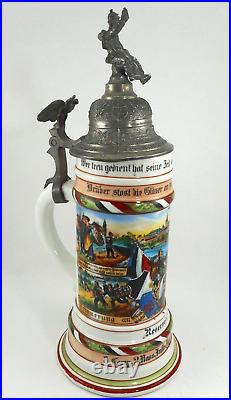
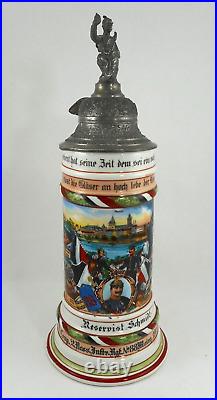
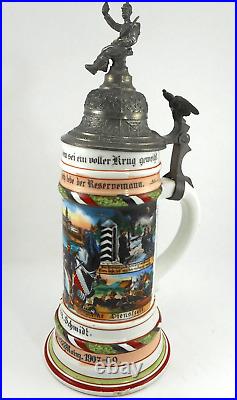

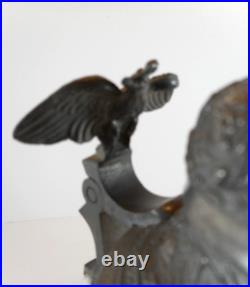


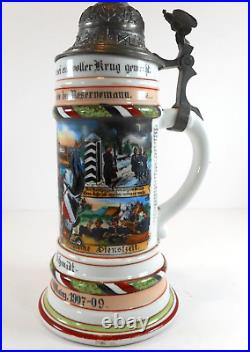
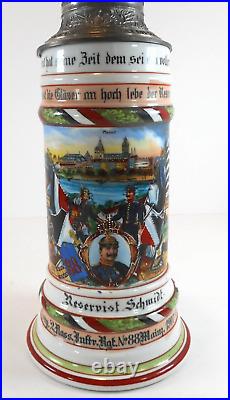
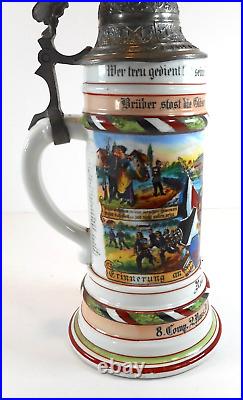

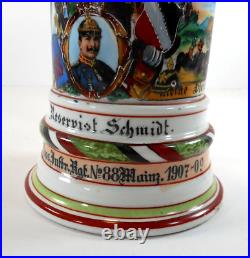

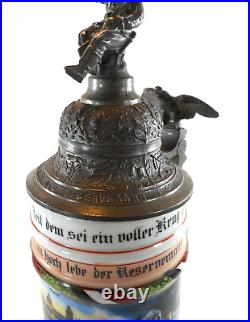


A RARE FIND German Lithophane regimental beer stein Rgt 88 CIRCA 1905. A very unique German regimental military tribute stein with a pewter lid. Wonderful soldier figurine at the lid’s finial and an eagle as well. Fine porcelain body with lithophane bottom depicting a family scene, possibly before a battle farewell, a woman and the man is in uniform. An array of colorful hand-tinted transfer scenes are featuring the regiment’s glory. Gothic text in German gives additional details, as well as lists the names of the soldiers. 12.5″ tall 5″ wide with handle, weighs about 2 lbs. Please see all the pictures for details and let us know if you have any questions. On January 18, 1871, Wilhelm I, King of Prussia, became the first Kaiser (Emperor) of Germany. Ten days later France signed an armistice and the Franco-Prussian War came to an end. On April 16th of the same year, a constitutional law was passed making every German male liable for military service, the only exceptions being: (1) members of ruling houses; (2) criminals; and (3) those deprived of their civil rights by courts of law. The five branches of the army were the infantry, cavalry, artillery, pioneer (engineer), and the military train. There were also technical service units such as Eisenbahn (railway), Telegraphen (telegraph), and Luftschiffer (airship). Volunteers for all units provided men for the Schutztruppen (colonial troops). The navy was a separate department, responsible only to the Kaiser. Reservists reported to their units in early October and the training was provided by the unit, as opposed to the American concept of using basic training centers. This system of reporting as a class and leaving with the same group lent itself to the concept of purchasing active duty remembrances, much as an American boy or girl would obtain a high school or college ring. The list of souvenirs was long and varied, including, but not limited to, steins, pipes, flasks, glasses, individual and group photos, certificates, demitasse cups and saucers, clocks, swords, bayonets, paperweights, and many others. The period of popularity extended from the mid-1890s until the onset of World War I. Almost all early examples came from Bavarian units. Steins with wartime dates also exist but the demands of the war in terms of men and material effectively ended the manufacture of regimental steins as we know them. Regimental steins of German manufacture also exist from units of the armies of France, Austria, Italy, and Hungary.

 D5 Creation
D5 Creation